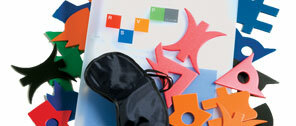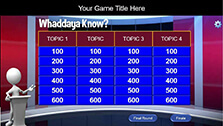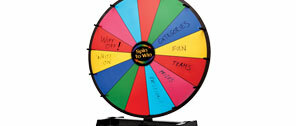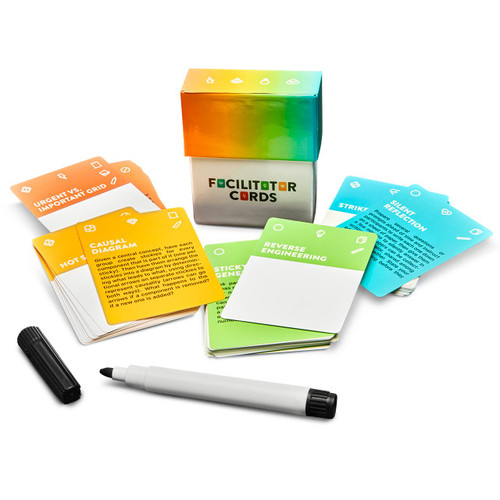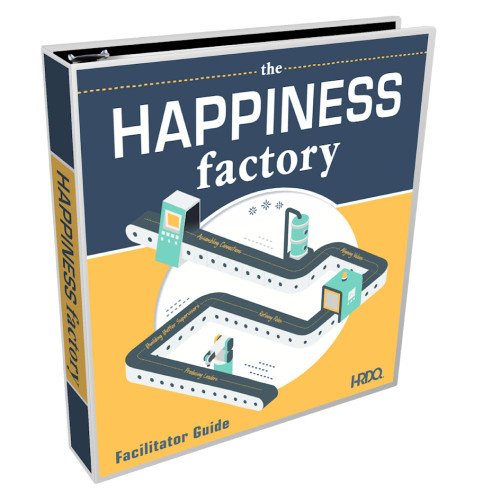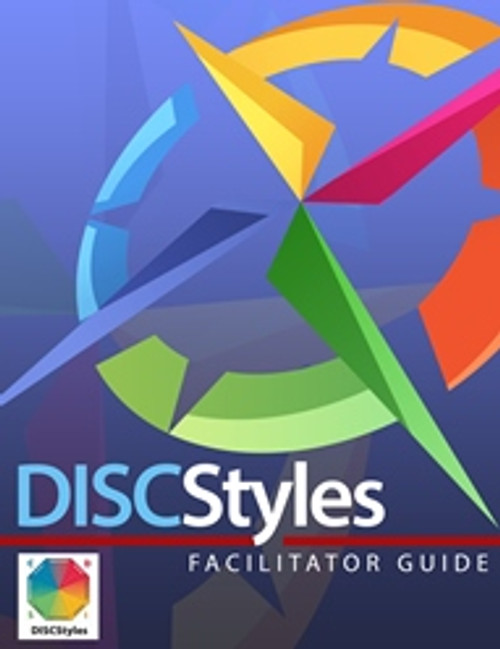Designed by and for facilitators, VirtualGlass™ is an online training platform containing 20+ virtual activities that make online learning more interactive and engaging. The toolkit offers dozens of tools and experiences for Team Development, Leadership, Styles, and Communication. All were modified from face-to-face experiences, in an effort to bring top-notch in-person energy to remote workshops.
MAKE ONLINE INSTRUCTOR-LED TRAINING FUN!
Find dozens of virtual instructor-led games and activities that make online training more engaging and interactive, including:
- Team building games activities, addressing...
- Communication
- Collaboration
- Co-opetition
- Problem-solving
- Assumptions
- Process improvement
- Roles
- Knowledge sharing
- Leadership activities, building...
- Leadership qualities
- Emotional Intelligence (EQ)
- Expectations and Accountability
- Conflict Management
- Time Management
- Building Trust
- Peer-to-Boss promotions
- Conversation & facilitation tools
- Flipchart-style note taking tools
- Debriefs
- Discussion forums
- Assessments
- Communication Styles
- DiSC
VirtualGlass™ works exceptionally well with blended learning as participants in the class and those virtual can complete the same activities at the same time. See an explanation of the different games below.
VIRTUALGLASS AT-A-GLANCE
- Easy Access: participants login with a URL you provide.
- Quick set up: Copy and paste the activity link in the chat box and click the play button in an activity to get started. Takes just 5 seconds!
- Participants: 3 - unlimited (some activities work best with at least three participants).
- Facilitation Notes: Activities include detailed leaders notes and PowerPoints (you can also reach out to the folks at Glass of Learning, if needed).
- Co-Facilitation: For small groups of 3-15 you may not need a co-facilitator. For larger groups, it helps to have one producer/moderator who sends participants into teams and breakout rooms so the facilitator can focus on the content.
- Downloadable Notes: Easily download notes from previous sessions for review or sharing with participants
- Administrator Panel: The admin panel lets you access facilitation tips and notes, as well as:
- Divide groups into teams
- View or track team progress
- Reset team progress on a game
- Listen in on group discussions
- Re-brand or re-name activities
- See all team notes on a final debrief screen
- Export and share post-session results
PRICING
Your purchase of VirtualGlass is for one Facilitator. You can have as many participants as you want!
SOME QUICK EXPLANATIONS...
About the platform
Why the platform was created
GAMES & FACILITATION
TEAM BUILDING GAMES
Aggregate – An architect has come up with plans for a new condo complex, however, before he could complete the drawings, he quit the job. Each team will complete the Architects drawings for the ground floor of a condo complex. The team will only have the Architect’s notes to complete the construction. PURPOSE: Team collaboration, managing assumptions, prioritizing information
Circle Words - Participants organize a series of words into a logical order. Focus debriefs on mindset, community, communication, decision-making, flexibility, time management, and more. PURPOSE: Effective communication, team building, team bonding, and problem solving, time management. [Credit: Chris Cavert & Friends FUNDoing]
County Fair – In this matrix/logic puzzle teams must identify the winners of the County Fair using the 13 clues. Teams must identify who baked each pie and which prize each pie won. PURPOSE: Building communication and collaboration skills. [Credit: Michelle Cummings]
Distortion - Participants must communicate a drawing to someone else who will build the drawing, using the tools they have been provided. Based on roles in the activity, different views of the information are available to the different users. PURPOSE: Build communication skills, examine limiting beliefs about what we have control over, improve planning, reframe mindsets, increase customer satisfaction.
Finding the Point - In this activity, a set of puzzle pieces, when properly assembled, creates a set pattern. Teams will assume they don’t have enough resources to finish the task and must explore reactions and approaches to wrestling with limited resources. PURPOSE: challenging assumptions, collaborative creative-thinking, and problem-solving. [Credit: Jim Cain Teamwork & Teamplay]
On Deck – In this sudoku-like activity, teams must organize a 4x4 grid of playing cards according to a set of criteria. Over a series of rounds, the criteria will change, making the challenge more difficult. Between rounds, teams debrief their successes and explore new strategies to complete the task. PURPOSE: develop communication and listening skills, process improvement, and group problem-solving. [Credit: Michelle Cummings]
Personify – in this win-win game, teams take turns placing their game pieces on a grid to gather the highest score possible. Typically, teams will competitively block each other, restricting both teams from accumulating the most points possible. PURPOSE: explore tendencies toward competition over collaboration and highlight the benefits of sharing knowledge across teams.
LEADERSHIP ACTIVITIES
Best/Worst Leader - Use a variety of online crafts to create a metaphorical representation of the best or worst leader they have experienced. Discuss how it feels to work for different types of leaders. PURPOSE: Understand the impact of leaders, explore personal leadership goals
Emotional Intelligence – Explore four quadrants of EI, identify the EI behaviors of each quadrant. PURPOSE: identifying the 4 skills associated with Emotional Intelligence.
Expectations and Accountability – 2 part coaching activity – Help participants set clear expectations with their direct reports. Use Glass of Learning’s 5-step model to outline the expectations, then work through the 5-step accountability model to establish how they will hold individuals accountable for expectations set. PURPOSE: setting expectations and delivering on promises.
Impact of Conflict - See how conflict has a ripple effect throughout the organization. Teams will review a set of conflict scenarios and together, discuss the impact these situations would have and possible solutions to address the situation. Upon review of the scenarios, teams will add notes to the screen recapping key learnings on the impact of conflict and solutions to manage conflict in the workplace. PURPOSE: managing conflict and understand the impact of conflict on others.
Managing Time – Working in small groups, participants organize a manager’s daily tasks in the Priority Matrix. Concurrently, a series of interruptions will appear on the screen, interrupting the group’s flow. Participants must figure out how to manage these additional tasks in real time. PURPOSE: time management, prioritization and shifting priorities, differentiating tasks based on urgency and importance.
Peer to Boss – a scenario-based activity demonstrating the challenging decisions that can come up between bosses and their employees who once were peers. In this “Choose your adventure’ style activity, participants choose between multiple choice answers related to each scenario. PURPOSE: navigate changing roles, from peer to boss and build awareness of potential challenges, opportunities, and roadblocks.
Trust Spectrum Scenarios (team experience) – participants examine a series of real-life situations, then discuss whether they would give or withhold trust in that scenario. PURPOSE: understand individuals’ varying degrees of trust and the impact of psychological safety on work environments and team performance.
Trust Spectrum (Individual experience) – individuals review a series of actions members of their team do to support both the department and the leader. In reviewing these actions, individuals assess if they would readily complete these actions for their leader and if their team would complete these actions for them. PURPOSE: explore obstacles that may prevent trust in the workplace and the impact of distrust.
CONVERSATION TOOLS
Bring & Brag, Share & Steal - Debrief tool allows participants to share experiences and successes using online sticky notes. PURPOSE: Collect group’s wisdom and best practices.
Circle of Influence – Leadership Activity exploring areas of Influence and Concern - In part 1, Teams identify work issues over which they have influence or no-influence. Debriefs explore how circles of concern and negative energy can affect others’ success. Part 2 invites participants to revisit their concerns, and identify how they can add influence (not just concern) in these areas. PURPOSE: leadership development, understanding areas of concern and influence, and focusing on areas where you can have positive impact. [Credit: Stephen Covey]
Discussion Forum / Flip-charting - Capture notes from small groups on any number of topics. Combine break-out discussions into one document that can be viewed by all participants for a debrief discussion. PURPOSE: record and review any team discussion.
ASSESSMENTS
Communication Styles - Players examine four communication styles: Intuitor, Feeler, Thinker and Sensor. Improve teams’ awareness of how we send and receive information through our communication. PURPOSE: Assessing your own and others’ communication style, and adapting your style to improve leadership and relationship results. [Credit: Paul Mok, Training Assoc. Press]
DiSC Work of Leaders – 3-part activity – Style teams (grouped according to their DiSC style) review a set of descriptive words corresponding to their style and collectively select the top 5 cards that best describes them. Then, teams come together and answer two questions about their work style, highlighting key differences among the different styles. Finally, the group plots their DiSC style on a visual map. PURPOSE: understanding what qualities might be missing, understanding personal DiSC Styles of Leadership, and ways to adapt styles to improve leadership impact.
Walk Awhile in my Shoes - Participants gain a deeper understanding of the perspectives of employees versus managers on a variety of topics. In small groups, teams read through a series of examples that build empathy, understanding and cooperation between different levels in an organization. PURPOSE: build empathy and appreciation, give benefit-of-the-doubt, and help others be their best. [Credit: Eric Harvey & Steve Ventura]
A FEW MORE DEMOS
AGGREGATE GAME
DISTORTION GAME

